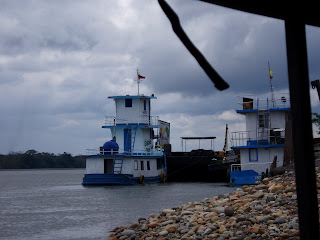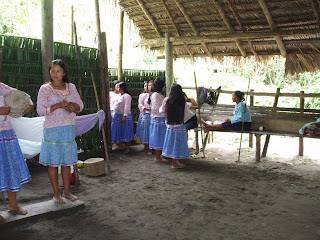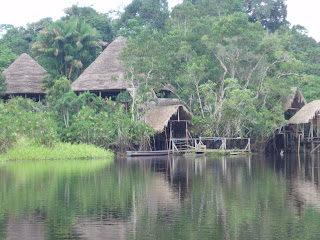We were up at 530AM but I was awake long before that with the animals and rain. There was a foggy haze over the river at the sunrise. We had a quick breakfast and left for our canoe ride back to Puerto Gregorio, where we got in the van and traveled to Coca. During this 3 ½ hour ride we had another Toxic Tour, Jose showed us a video from Russ Kemp, The Battle for the Amazon (check this out on You Tube). We stopped several times to see the flames that burn 24 – 7 and have for years, more African Palms – just terrible what is happening to the Amazon! The lumber industry destroying the forests, the oil pipelines, will give you a better idea of the harsh realities that face the Amazon region of Ecuador. Upon arrival in Coca, Jose checked in our luggage and received our boarding passes for our 30 minute TAME flight back to Quito. We departed about 1215PM and arrived at 1245PM, we were met at the airport by a representative from Rainforest Alliance and was transferred to the Marriott Quito. We checked in and I went right to the shower and took a long hot shower and washed my hair 3 times! It was wonderful, I did feel guilty in wasting so much water, but in the past 9 days I didn’t use that much water . . . . . . At 730PM we met with the Rainforest Alliance, USAID, managers from all the lodges to hear about our journey to the lodges and how things have changed from February to August in the short 6 months.
5 lodges in 9 days and I can not even count the number of canoe rides on many different types of canoes! Back to the room for bed as I have a 3AM wake up call for my flight in the morning. All my bags are packed and I’m ready to go.

















































